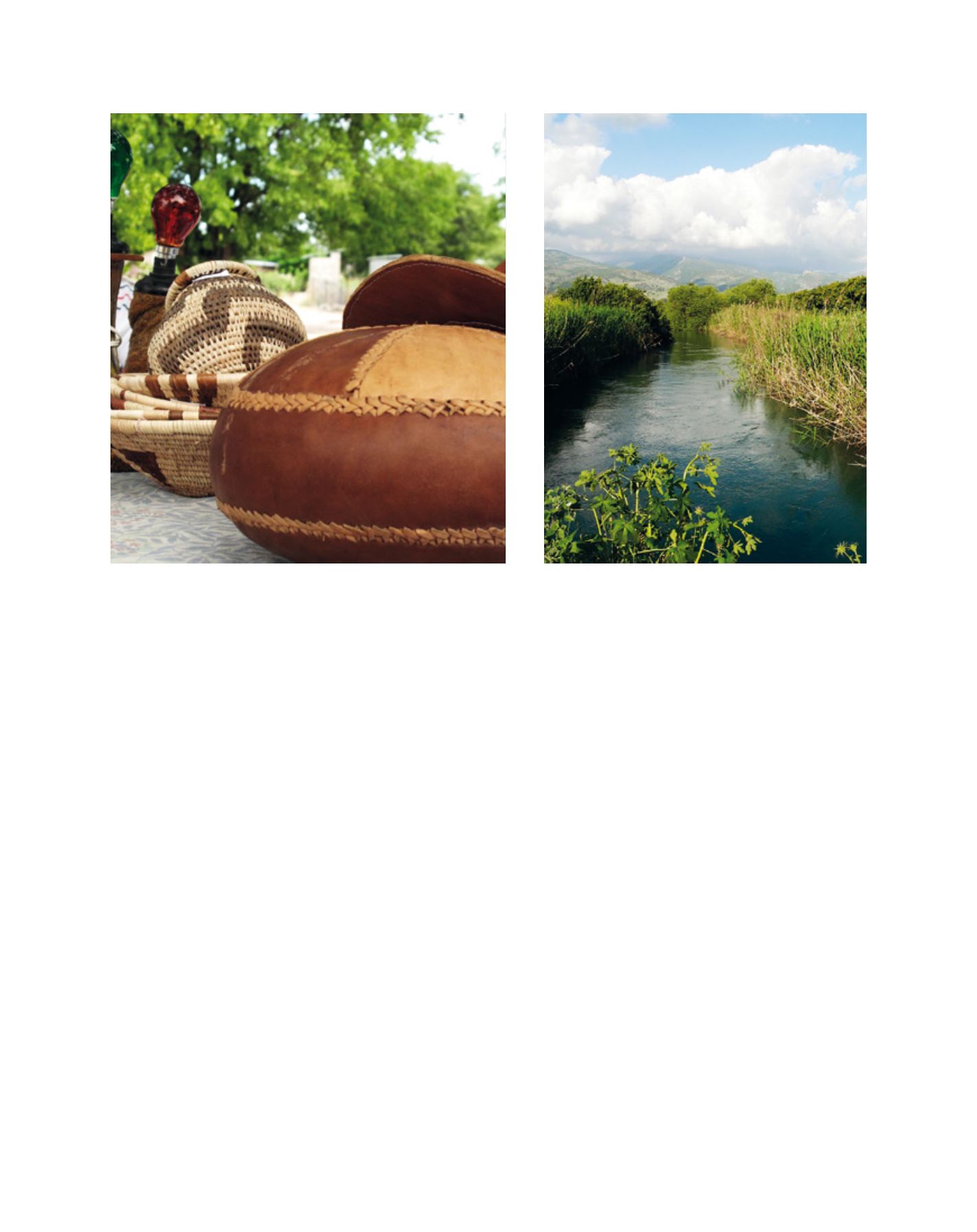

[
] 46
T
ransboundary
W
ater
M
anagement
Adult forums have indeed been created afterwards,
offering a platform for discussion with local profes-
sionals and planners on environmental problems and
possible solutions. The Jordan River communities
became very much involved in the process of estab-
lishing concrete activities, which not only improved
and deepened the relationships across the border, but
also brought eco-tourism and, therefore, economic
development to the region. Steps have been taken to
create a Peace Park at the junction of the Jordan and
the Yarmouk Rivers, and Neighbours‘ Paths were devel-
oped in several communities. Following the path of
water, ending at the border, the trails highlighted the
connection between the communities and their water
resources, and aimed to attract local, national and
foreign tourists. This idea mobilized the local commu-
nity in support of cross-border cooperation, protecting
local ecosystems and promoting local entrepreneurship.
Finally, the third group of stakeholders involved
were the mayors. They signed Memoranda of
Understanding to reinforce the vision of a shared
future and raise political attention. Several partnering
municipalities are cooperating on the issue of wastewa-
ter reuse and management. A more recent element of
the project launched by FoEME was a Transboundary
Advocacy of Parliamentarians. This project aimed to
raise awareness among elected representatives and
decision makers in Palestine, Jordan and Israel on the
need to find sustainable solutions to the threats facing
the region’s shared waters.
Designed as a holistic model for community partnership, the project
involved youth groups, adult residents and local government repre-
sentatives. Within each sector, emphasis was placed on interaction
with the neighbouring community. The project undertook joint youth
group activities, adult forum visits to their neighbouring community
and mayors’ bilateral and regional gatherings. At the regional level,
GWN worked to encourage sustainable water management through
information sharing, dialogue and cooperative ventures. The GWN
project fostered personal interactions that naturally developed into
relationship building over time. No less important, due to the fact
that water issues are linked to community development options and
that water issues are shared, the project helped foster the understand-
ing that addressing and solving many of the local problems requires
cross-border cooperation. The GWN project went on to demonstrate
the ability of local community partnerships to resolve environmental
hazards through mutually beneficial cross-border cooperation.
The first step of the project focused on raising awareness and
collecting information. It has been an important challenge to explain
the purpose of the project to the population and collect informa-
tion on their needs. To both gain the trust of the community and
to empower the youth, concrete projects were undertaken in each
community, led by young people. The GWN team created a group
of youth volunteer water trustees in each community. School build-
ings were transformed into water-wise buildings, reusing greywater
or rainwater for the flushing of toilets and ecological gardens were
built. Empowerment of the young generation facilitated the crea-
tion of a cooperative knowledge and dialogue with the adults of the
respective communities. The young people showed, through their
actions, the opportunities and benefits to work with the neighbour-
ing villages to their elders.
Tourism is boosting local business
Cross-border cooperation is helping to rehabilitate the Jordan River
Image: B Noury
Image: B Noury


















